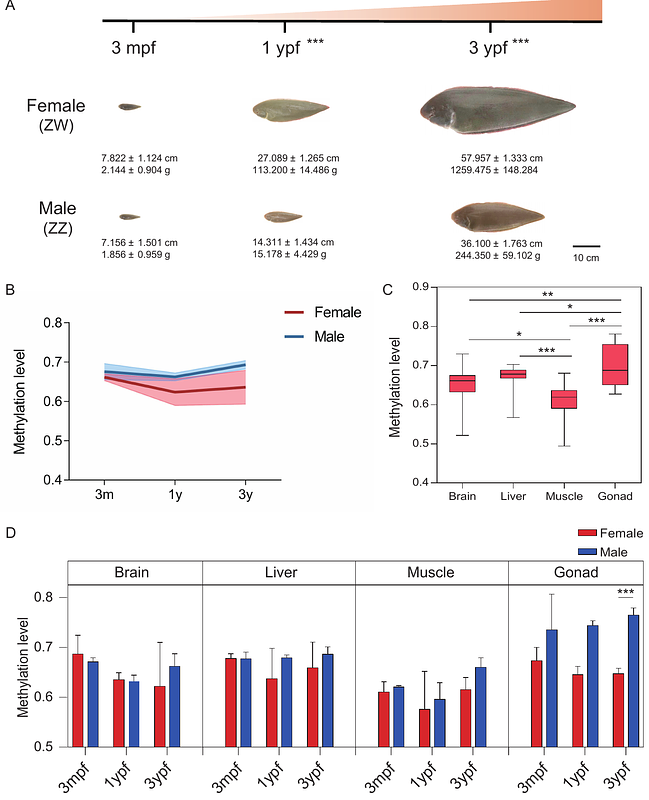DNA Methylation in Sex Chromosomes and Genes under Selection Underpins the Emergence of Sexual Size Dimorphism

DNA Methylation in Sex Chromosomes and Genes under Selection Underpins the Emergence of Sexual Size Dimorphism
Wang, Q.; Hao, X.; Anastasiadi, D.; Liu, K.; Li, S.; Feng, B.; Wang, R.; Ritchie, M. G.; Liu, Y.; Wang, H.; Tang, L.; Piferrer, F.; Shao, C.
AbstractSexual size dimorphism (SSD) refers to the differences in body size between males and females. Epigenetics such as methylation contribute to shaping phenotypes, nevertheless, their role in SSD is still unclear. Here, we used Cynoglossus semilaevis, a species with larger females known as female-biased SSD, as a model to investigate the role of methylation in the emergence and regulation of SSD. Methylomes and transcriptomes were constructed in four tissues (brain, liver, muscle, and gonad) from three key life stages: juveniles (3-months post fertilization), male mature stage (1-year post fertilization; ypf), and female mature stage (3 ypf). In 1 ypf and 3 ypf females showed lower methylation, while the number of differentially methylated regions between sexes increased during the lifetime. Genes at the top of the growth hormone/insulin-like growth factor (GH/IGF) axis and hypothalamus-pituitary-gonadal axis (gh1, igf1, gnrhr2r-like, err{gamma}, etc.) showed differential methylation between sexes, consistent with sex-related differences in growth. The female-specific W chromosome showed higher methylation than the autosomes or the Z chromosome. Genes of the IGF signaling network that negatively regulate growth and located on W chromosome were hyper-methylated than their Z homologs. Furthermore, genes with a faster evolutionary rate in C. semilaevis exhibited lower methylation levels than the background genes, suggesting an important evolutionary role for DNA methylation in shaping SSD. Our results provide a comprehensive depiction of methylation regulation of SSD in vertebrates, and improve our understanding of how methylation regulation can help organisms to respond to natural selection, and allocate resources between the sexes.